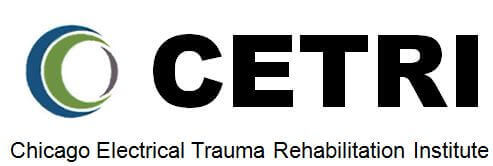What Happens When One Gets Electrocuted?

The terms “shock” and “electrocution” represent two separate yet interconnected concepts. While some may mistakenly refer to electric shock as electrocution, there’s a clear difference between the two. Let’s explore the difference and what happens when a person encounters an electrical current.
Electrocution vs Electric injury
Electrocution is an event that signifies a fatal electrical shock, whereas electrical injury is a term that refers to a non-fatal electrical shock. To simplify, while both electrical injury and electrocution are caused by the passage of abnormal electrical currents through the body during electrical shock, electrocution is the term traditionally used when the electrical shock was fatal. Electrical injury is term used for non-fata electrical shock cases.
Why Does a Person Die of Electric Shock?
Electrical shock injury can range from innocuous to severe, depending on factors like the electrical power capacity (i.e. voltage x current) of the electrical power source, the pathway it takes through the body, and how long the current exposure lasts. The cause of death from electric shock from low power household electrical shock is often related to the interference with the coordination of the heartbeat leading ineffective blood pumping and circulatory arrest. Very high-power shocks from contact with a high-voltage electrical powerline or industrial device can result from extensive tissue destructive electrical, heat and blast pressure forces. Fatalities can still occur due to additional injuries like severe electrical burns or harm to internal organs.
Below is the breakdown of what happens when one gets in contact with an electrical current:
The shock
For low-voltage electrical shocks typical of those which happen in the home, the electric current may cause a small burn at the contact point. However, more importantly, the current can directly stimulate muscles and nerves that are naturally controlled by tiny electrical signals. If the current passes through the chest, it can interfere with breathing and heart rhythm. Either of these can lead to death.
High-voltage, more accurately called high-power, electrical shocks can destroy the body with heat and electrical force disruption of tissues (i.e.: irreversible electroporation). Death can result from extensive tissue injury as it can from any other major body trauma.
Burns and Internal Injuries
Coming into contact with electricity can result in burns at the skin contact points of the current. The severity of these burns is influenced by the strength and duration of exposure. Deep burns also occur resulting from the current passage through deep tissues. Deep burns may not be evident on physical exam and may require diagnostic imaging and surgical intervention to prevent infections and aid in the healing process. Additionally, internal injuries may affect organs and tissues, potentially causing long-term health complications if not promptly addressed.
Nerve Damage and Neurological Effects
When exposed to electric current, the nervous system is vulnerable to potential harm, leading to neurological damage. Symptoms such as numbness, tingling, weakness, and paralysis may arise from the disruption of nerve function. These effects can manifest immediately or gradually over time.
Prevention
One should exercise caution around electrical sources to prevent electrocution incidents. Seeking urgent medical assistance when in contact with electric current is essential to minimize damage and improve outcomes. Awareness of electrical safety measures and precautions is key to avoiding the risks associated with electrocution. CETRI (Chicago Electrical Trauma Rehabilitation Institute) is a leading institution in researching and advancing treatment for electrical and non-ionizing radiation injuries through innovative methods. Our Clinical Program is committed to assisting survivors of electrical shock injuries in their journey towards full recovery. Get in touch with us today to discover more about our program and how we can help.
